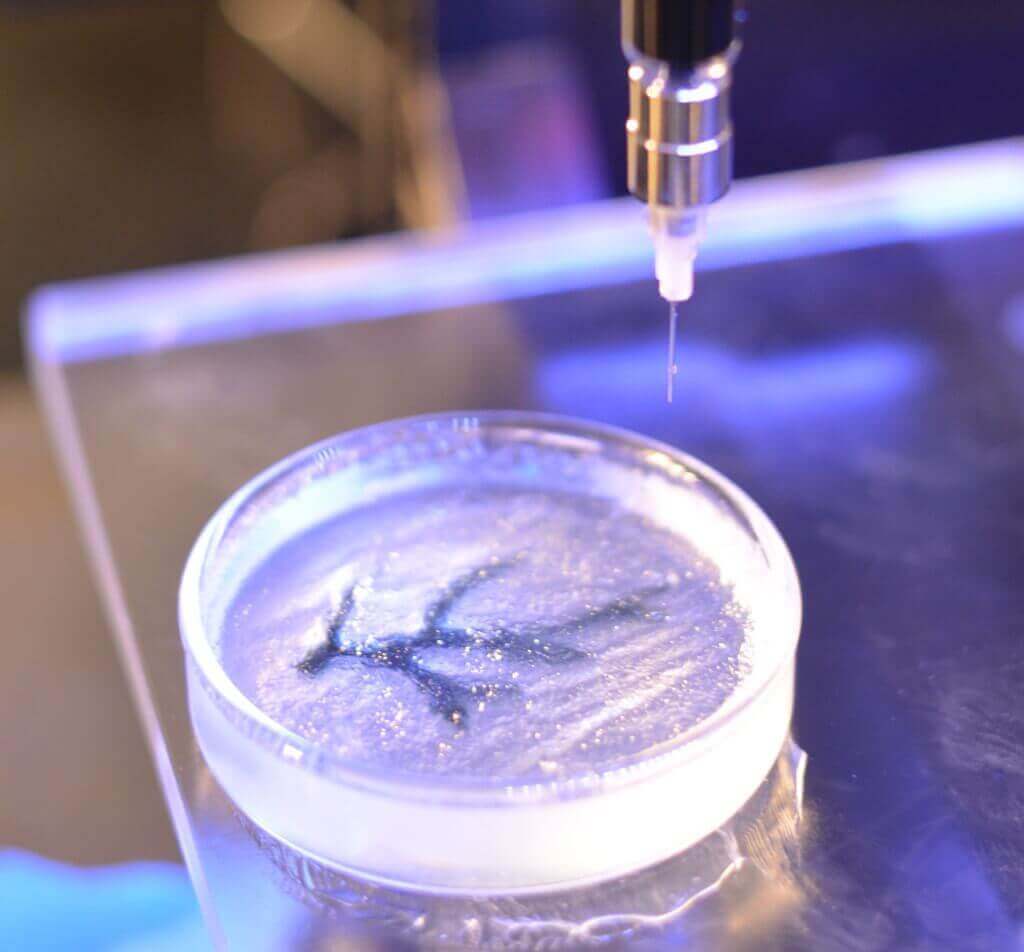Amongst the many uses for 3D printing, it is hoped that in the future it will provide a way for transplants to no longer be necessary to repair damaged organs.
Researchers from Carnegie Mellon University hacked a low-cost MakerBot 3D printer to print using biological materials.
Professor Adam Feinberg told the BBC: “Ultimately we would like to make organ transplant a thing of the past by creating specific engineered tissues or whole organs that would be specifically matched to you as an individual that would match your unique anatomy. Ultimately if we can incorporate your own stem cells you would have no immune rejection either.”
However, in order for this to happen there are some challenges to face first, such as how to print with a soft material, required to form human tissue. The issue here is that each layer needs sturdy support which is harder to create than with hard plastics or metal.
How do they print Human Tissue?
So far the team have successfully managed to bioprint coronary arteries with models created from MRI images.
The researchers developed a new method that has enabled them to print with soft materials such as collagens, alginates and fibrins – all of which naturally appear in the body.
The benefits they found of using 3D printing are that, for building materials and structures, the great control can mean a very accurate shape.
So, the team decided to print the artery from collagen, but use a support gel made out of gelatin. This is done at room temperature.
When the print is done, the team place the whole piece into a subculture incubator at 37 degrees – which is also body temperature. This temperature turns the supporting gelatin into a liquid, leaving the artery whole and undamaged.
The team are currently releasing all of these designs as open source and hope to encourage the community to build upon what they have done by creating their own designs.
If you want to dig deeper, please read their paper “Three-dimensional printing of complex biological structures by freeform reversible embedding of suspended hydrogels“, as published in Science magazine
What do you think about this process? Could this be the future for transplants?
License: The text of "Scientists 3D Print Human Tissue With a Hacked Makerbot" by All3DP is licensed under a Creative Commons Attribution 4.0 International License.

